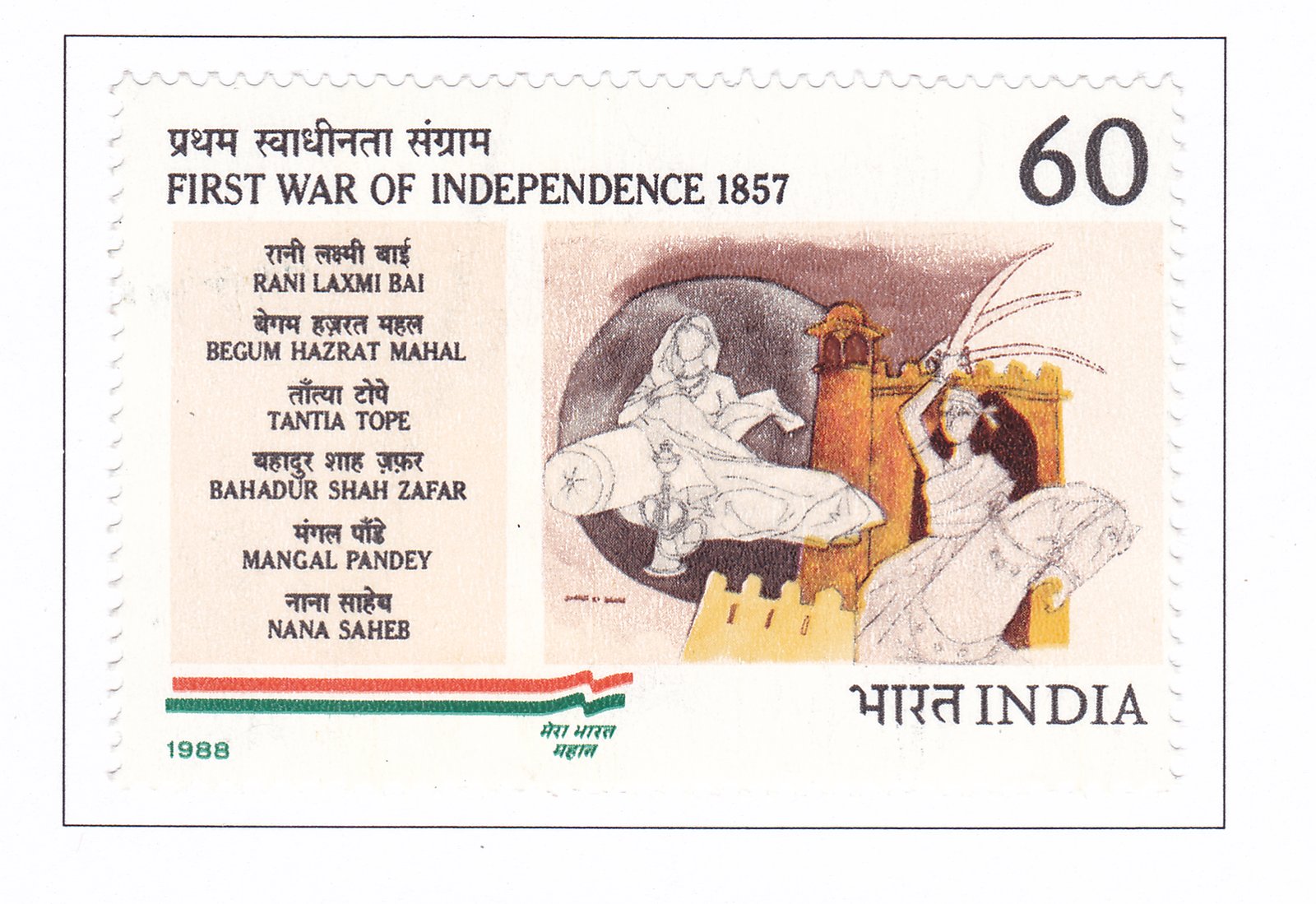First War of Independence -1857

Technical Data
| Date of Issue | May 9, 1988 |
|---|---|
| Denomination | 60 p |
| Quantity | 1,500,000 |
| Perforation | comb 13 x 13½ |
| Printer | Security Printing Press, Nashik |
| Watermark | No Watermark |
| Colors | Multicolor |
| Catalog Codes |
Michel IN 1158 Stamp Number IN 1219 Yvert et Tellier IN 972A Stanley Gibbons IN 1311 |
| Themes | Horses |
Commemorative Stamp Set: First War of Independence Remembering May 10, 1857
Design Elements:
- The stamp design could feature iconic figures such as Mangal Pandey, Rani Lakshmi Bai, Bahadur Shah Zafar, Tantia Tope, Nana Saheb, and Begum Hazrat Mahal.
- Background elements could include symbols of unity, such as the Indian flag or symbols representing various religions and cultures.
- Colors could be patriotic, reflecting the spirit of resistance and unity against colonial rule.
Cultural and Historical Significance:
- May 10, 1857, marks the beginning of the Indian Rebellion of 1857, also known as the First War of Independence.
- It symbolizes India’s first major uprising against British colonial rule, driven by a desire for freedom, justice, and independence.
- The rebellion brought together people from diverse backgrounds, religions, and regions, united in their fight against oppression and injustice.
Usage:
- The commemorative stamps can be used for postage and collections by philatelists.
- They serve as educational tools to remind people of India’s struggle for independence and the sacrifices made by its leaders and people.
Importance of the Commemorative Stamp Set:
- This stamp set pays tribute to the bravery and sacrifice of those who fought for India’s independence in 1857.
- It highlights the unity and diversity of India’s freedom struggle, showcasing how people from all walks of life came together for a common cause.
- It serves as a reminder of the resilience and determination of the Indian people in their quest for freedom and self-rule.
Example of the Stamp Design:
- The stamp design could feature portraits of leaders like Rani Lakshmi Bai on one stamp, Mangal Pandey on another, and Bahadur Shah Zafar on another, with thematic backgrounds reflecting their contributions and the spirit of the rebellion.
- Each stamp could be intricately designed to capture the essence of the leader it represents, their role in the rebellion, and their significance in Indian history.
Significance:
- The commemorative stamp set honors the legacy of May 10, 1857, as a pivotal moment in India’s struggle for independence.
- It commemorates the courage, unity, and sacrifice of those who fought against colonial rule, inspiring generations with their spirit of resistance and determination.
This commemorative stamp set serves as a poignant reminder of India’s historic struggle for freedom, celebrating the bravery and ideals of its leaders and people during the Indian Rebellion of 1857.
